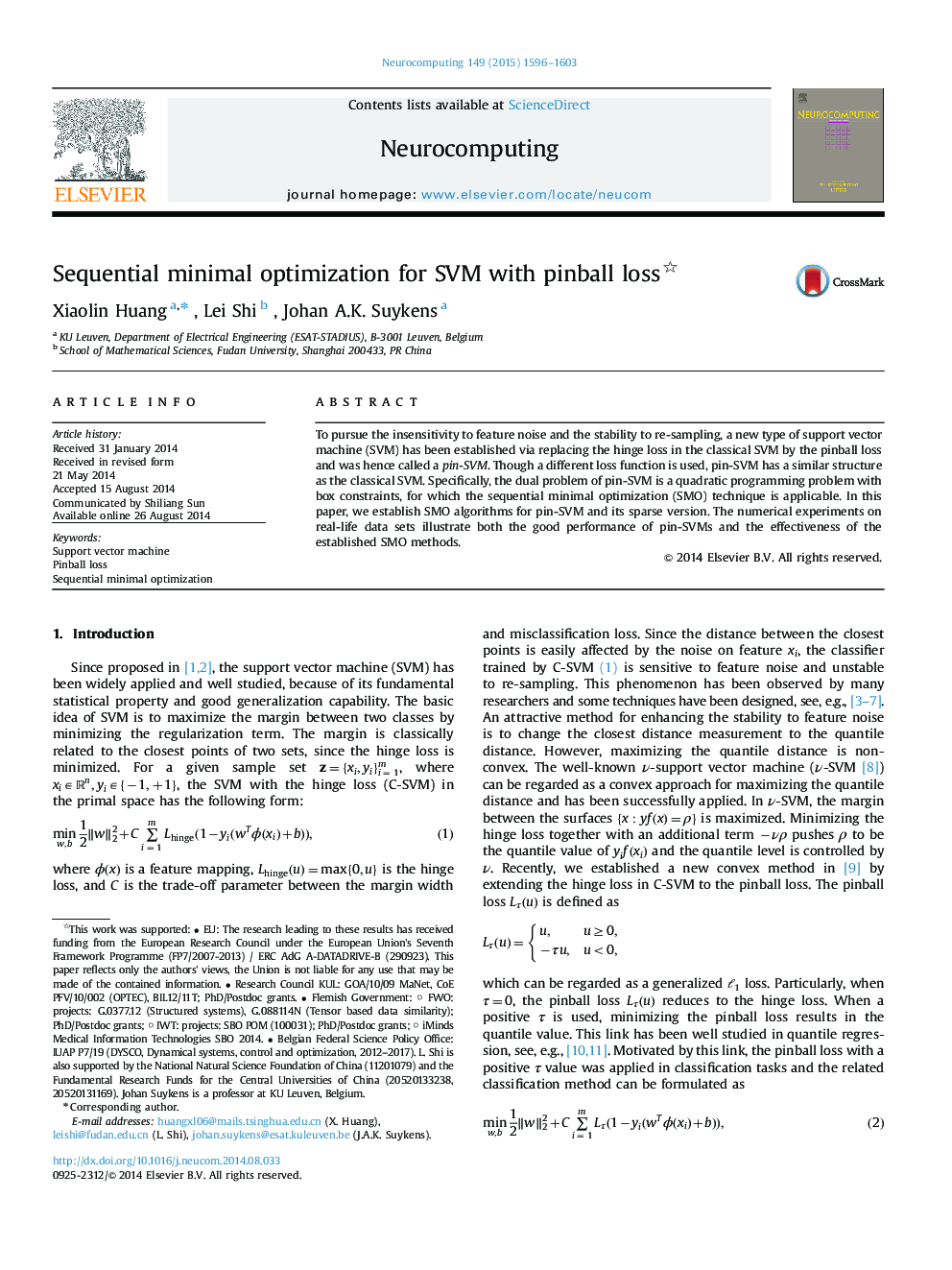| Article ID | Journal | Published Year | Pages | File Type |
|---|---|---|---|---|
| 407679 | Neurocomputing | 2015 | 8 Pages |
Abstract
To pursue the insensitivity to feature noise and the stability to re-sampling, a new type of support vector machine (SVM) has been established via replacing the hinge loss in the classical SVM by the pinball loss and was hence called a pin-SVM. Though a different loss function is used, pin-SVM has a similar structure as the classical SVM. Specifically, the dual problem of pin-SVM is a quadratic programming problem with box constraints, for which the sequential minimal optimization (SMO) technique is applicable. In this paper, we establish SMO algorithms for pin-SVM and its sparse version. The numerical experiments on real-life data sets illustrate both the good performance of pin-SVMs and the effectiveness of the established SMO methods.
Related Topics
Physical Sciences and Engineering
Computer Science
Artificial Intelligence
Authors
Xiaolin Huang, Lei Shi, Johan A.K. Suykens,
